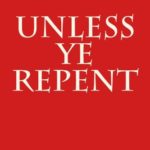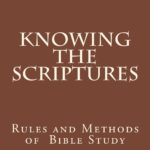Description
The Tabernacle of Israel
Its Structure and Symbolism
Illustrated
by
James Strong
Author of Strong’s Exhaustive Concordance
2015
Chapter 1. History of the Tabernacle. 7
Chapter 2. The Structure of the Tabernacle. 10
The Altar of Burnt Offering. 16
The Urim and the Thummim.. 101
Chapter 3. Symbolism of the Tabernacle. 105
External Aspects of Tabernacle Articles. 119
Comparison of the Three Arks. 129
Symbolism of Tabernacle Materials. 134
Relative Sanctity of Various Parts. 139
The Crowning Glory of the Tabernacle. 141
Introduction
For more than thirty years the subject of this work has been an earnest study with the author, and in the course of his investigation and comparisons he has procured and carefully examined every book of note treating upon it. The author has endeavored to unravel the entanglements which have hitherto baffled the skill and learning of interpreters and tried to make the whole of the tabernacle plain to the average comprehension. He has here brought together everything, thus far ascertained, that he judges adapted to be of service in conveying a just idea of that remarkable building, the first and (including its later development, the Temple of Jerusalem) the only one immediately devised and directly authorized by the Almighty Himself as His place of special worship for His chosen people. As such it has ever since held a conspicuous position in the eyes and thoughts of saints, and in these days of archaeological science it has still retained its hold upon the reverent curiosity of an intelligent world. Great pains have been taken by learned men to restore it as fully as possible to the understanding of modern Occidentals. The present effort, it is hoped, will not be regarded as overambitious in aspiring to do this more completely than heretofore for popular purposes. The author has no pet theory to establish, nor any doctrinal influence to bias him. He has simply attempted to collect, weigh and combine the information afforded by every source accessible, to incorporate whatever new features his own discoveries and comparisons have introduced, and to present everything really pertinent in as lucid and systematic a form as the topic allows.
Fig. 1.—The Jewish utensils on the Arch of Titus at Rome. The square heads of the poles held by the soldiers are the Roman standards.
Chapter 1. History of the Tabernacle
It appears in Exodus 33:7 that the name “Tabernacle of the Congregation”[i] was originally applied to an ordinary tent, probably the one officially occupied by Moses himself; and that this was at first set apart by the token of the divine presence at its doorway as the regular place of public communication between Jehovah and the people. (See Fig. 14.) This was prior to the construction of what was afterwards technically known as the Tabernacle, which of course superseded such a temporary arrangement.
Soon after the arrival of the Israelites in the center of the Sinaitic mountains, Moses was directed by Jehovah to prepare a special building for his worship, according to a pattern shown him during his stay of forty days on the summit of the mount. Accordingly, orders were immediately issued for contributions to this end, the materials were freely offered by the people, a chief artificer, “Bezaleel, the son of Uri, the son of Hur, of the tribe of Judah,” with “Aholiab, the son of Ahisamach, of the tribe of Dan,” as his assistant (Exod. 31:2, 6), was selected to have immediate charge of the task. After about eight months’ labor, the Tabernacle, with all its equipments, was completed and erected on the first day of the first month (Nisan) of the second year after the departure from Egypt (Exod. 40:17). The cloudy Pillar of the divine Shekinah doubtless indicated the precise spot of its location by resting over the central object of the entire worship, the sacred Ark beneath the Mercy Seat. During the journeys and the halts in the wilderness, as well as throughout the campaigns in Moab, the Tabernacle marked the headquarters of the Israelitish host, and on the arrival in Canaan it accompanied Joshua in most of his expeditions against their enemies. In all of these migrations it was taken down piecemeal, carried on vehicles constructed for the purpose and drawn by oxen, in charge of the priests assisted by the Levites, and was reerected at every stopping place. The position of the several tribes of Israelites was regulated by divine prescription around it, both on the march and in the encampment, the signal for starting or halting being the motion or the resting of the mute guide, the Pillar cloudy by day and fiery by night. As a slowly-burning pyre (Exod. 3:2) it shows white—like smoke in the daylight, but red—like flame at night. Occasionally (Exod. 14:20) it was dark on one side, and bright on the other.
In the latter part of Joshua’s administration, the Tabernacle was set up at Shiloh (Josh. 18:1), where it remained during the troubled period of the Judges, down to the days of Eli,[ii] when the sacred Ark was taken out of the building (1 Sam. 4:4), and never returned. It is probable that the timber of the wooden part of the edifice (the curtains, of course, having been often renewed) was by this time so worn and decayed (although of durable wood and thickly plated with gold) as to be unserviceable, and Talmudic tradition speaks of its replacement by a permanent stone structure, traces of which, it is thought, are still discoverable on the site of Shiloh. However that may be, there are no further distinct indications of the existence or locality of the original building, although evidences occur of the transfer of the worship, under Samuel’s administration, successively to Mizpeh (1 Sam. 7:6), and elsewhere (1 Sam. 9:12; 10:3; 20:6; Ps. 132:6). In David’s day the shewbread was at one time kept at Nob (1 Sam. 21:1-6), which implies the existence there of at least one of the sacred utensils of the Tabernacle; especially as the priests largely lived there (22:11), and some part of their residence appears to have served, in so far at least, the purpose of a sanctuary (21:7, 9). Even down to the close of David’s reign the “high place that was at Gibeon” possessed some fragments of the original Tabernacle, with its altar of burnt offering (1 Chron. 16:39; 21:29; comp. 1 Kings 3:4; 2 Chron. 1:3-6). This is absolutely the last mention of the edifice itself.
Meanwhile a rival establishment to the last one named had been set up by David on Mt. Zion at Jerusalem, whither he had finally transported the sacred Ark,[iii] and gathered around it the sacerdotal ministrations in a new sanctuary, especially constructed for it, but which, as it is simply called a tent (1 Chron. 15:1; 16:1; 2 Sam. 6:17, “tabernacle”), would seem to have lacked the wooden walls of the earlier one (2 Sam. 7:2; 1 Chron. 17:1). (See Fig. 14.) This of course was in turn superseded by the famous Temple not long afterwards erected by Solomon, into which was doubtless gathered all that remained of the original furniture of the Mosaic Tabernacle (2 Chron. 5:5). The Candelabrum, however, if still extant, was replaced, in this edifice, by ten others, probably of a more gorgeous style (1 Kings 7:49), with at least a repeating of the altar of incense and the Table of Shewbread (1 Kings 7:48). The Laver, having probably long since been broken up, was also magnificently replaced (1 Kings 7:23, 27). On the demolition of the Temple by Nebuchadnezzar’s general, such pieces of the sacred furniture as had survived all previous changes and catastrophes probably shared the fate of the other valuables there, being all carried away to Babylon (Jer. 52:18,19), whither some articles of the kind had already preceded them (2 Chron. 36:7). There they remained till the downfall of that city (Dan. 5:2, 3), when the conqueror, Cyrus, delivered them to the Jewish “prince of the exiles” (Ezra 1:7-11). They were among the treasures soon afterward permitted to be transported to Jerusalem (Ezra 5:14,15; 7:19), where they safely arrived under Ezra’s administration (Ezra 8:33). They seem at this time, however, to have consisted exclusively of the smaller but very numerous “vessels” for sacred uses, and no mention is made, in any of these later enumerations, of the Ark or the more important pieces of furniture. Evidences of a tradition appear in much later Hebrew literature to the effect that, on the capture of Jerusalem, or perhaps rather its final despoliation, the Ark was hidden away by Jeremiah, to be restored only on his return with the final dominion of Israel; but this is doubtless unfounded. The precious palladium of the Holy City (1 Sam. 4:3) seems to have attracted the cupidity of some one of the foreign or domestic marauders who at various times violated the sanctity of the shrine (2 Kings 12:18; 18:16; 2 Chron. 25:24; 28:24) down to the period of the Babylonian invasion (2 Kings 24:13). There is distinct mention of the Table of Shewbread in the reign of Hezekiah (2 Chron. 29:18), and, in that of Josiah, allusion is perhaps made to the autograph copy of the Law originally deposited in the Ark (2 Chron. 34:15). After this date all direct traces of any of the sacred apparatus constructed in the desert vanish from history. The few extra-biblical notices of the furniture of the Herodian Temple, some pieces of which may possibly have been the same as those of the Tabernacle, will be considered in treating of their original construction. (See Chap. 3.)
[i] The Hebrew phrase here employed is óhel möéd (lit. “tent of meeting”) which, however, is often used synonymously with mishkán ha-edúth (lit. “dwelling of the assembly”) to designate the edifice itself. Strictly speaking, the terms “tent” (óhel) and “tabernacle” (mishkán) are found to be carefully discriminated (as we shall eventually see), denoting respectively the canvas roof and the wooden walls of the compound structure; never for both, except as the one implies the other; and absolutely never for each other. The expression, “tent of meeting” (often falsely rendered “tabernacle” in the A. V.), is especially appropriate from the fact that the representatives of the congregation of Israel were required to assemble for the divine commands at the “opening” (Heb. péthach, A. V. “door”) of the tent; for there was no mishkán or wooden part at the front of the building.
[ii] From the narrative in 1 Samuel 3, it would seem that the original court was replaced or at least occupied by permanent dwellings for the ministrant priests.
[iii] This central object of the Jewish worship, after its seven months’ adventures among the Philistines (1 Sam. 6:1) under Eli, had been deposited at Kirjath-jearim (1 Sam. 7:1), where it remained twenty years (v. 2) until Samuel’s establishment at Mizpeh (v. 6). After its removal by David, first from Kearjath-jearim (where by some means it had got back meanwhile apparently by way of Bethlehem [comp. Ps. 132:6; 1 Sam. 9:14] to the house of Obed-edom, and afterwards to Jerusalem (2 Sam. 6, 1 Chron. 13-16), we have no record of its leaving the Holy City, except for a few hours on the breaking out of Absalom’s rebellion (2 Sam. 15:24-29)





Reviews
There are no reviews yet.